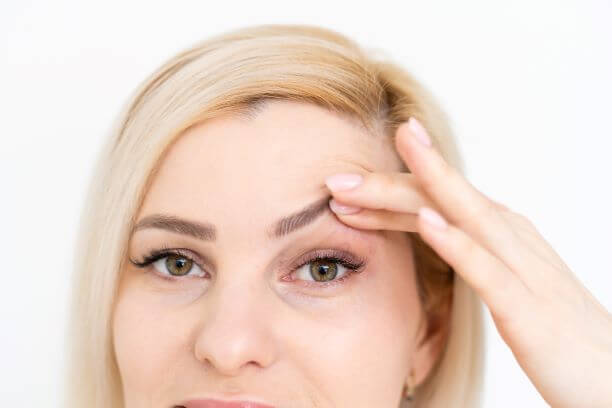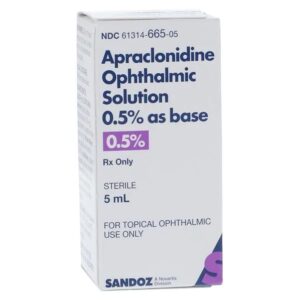

A possible side effect of Botox or Dysport (botulinum toxin) injection into the upper third of the face is ptosis or lid droop. Therapies recommended for treating ptosis resulting from administration of Botox/Dysport (botulinum toxins A and B) are:
- Iopidine (apraclonidine 0.5 %) eye drops. Your doctor may prescribe special eyedrops called apraclonidine, which tightens your eye muscle.
- More Botox, which can counteract relaxed eyebrow muscles if injected in the right place.
- Exercising – Exercising increases the blood supply to all your muscles including your facial muscles and so this can result in your Botox wearing off faster.
- Massaging and overuse of the treated muscle: DON’T massage the treated muscles until 2 weeks after treatment because this might result in migration of Botox to undesired muscles and subsequently more complications. Massaging it after 2 weeks, and repetitive trials using it, have shown to help in some cases.
- Heating pads: DON’T apply heating pads until 2 weeks after treatment. After 2 weeks, applying heating pads can help increase the blood supply to the affected areas, allowing Botox to wear off faster!
Keep in mind, If the upper eyelid droop is due to Botox ptosis of the eyebrow, this side effect lasts typically no longer than six weeks and resolves spontaneously without any medical intervention.
Preventing Eyelid Droop
Before your treatment, be sure to let your doctor know if you take medication, especially:
- Muscle relaxants
- Sleep aids
- Blood thinners
- Allergy medicine
People with medical conditions like previous facial surgery or a history of Bell’s palsy may be more likely to have eyelid droop after wrinkle injections. Your age, past sun damage, and other lifestyle factors could also impact how you respond to treatment.
After your treatment, avoid rubbing or massaging your face for a full day. This will help to stop the medication from spreading beyond the injected area.




